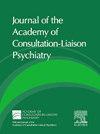急诊科对紧张症的介绍:2019-2021年国家急诊科样本研究。
IF 2.5
4区 心理学
Q2 PSYCHIATRY
Journal of the Academy of Consultation-Liaison Psychiatry
Pub Date : 2025-09-01
DOI:10.1016/j.jaclp.2025.08.006
引用次数: 0
摘要
目的:紧张症是一种以运动、情感、认知和行为障碍为特征的神经精神疾病。尽管它与显著的医疗费用、发病率和可预防的死亡率有关,但紧张症仍未得到充分诊断,特别是在急诊科(ED)的设置中。关于急诊科紧张症的人口统计学、诊断模式和结果的数据有限。本研究旨在利用国家急诊科样本(NEDS)描述与紧张症相关的急诊科就诊的流行病学和医疗保健利用。方法:我们分析了2019年至2021年期间因紧张症出院的ED就诊的NEDS,并对就诊进行加权以提供全国估计。结果:估计有51,671次就诊(占所有ED就诊的0.013%)诊断为紧张症。诊断为紧张症的ED表现为双峰年龄分布,20-29岁和55-64岁的患者出现高峰,尽管有2岁和90岁以上的患者出现症状。黑人患者被诊断为紧张症的比例过高(27.6%)。包括精神分裂症谱系障碍、抑郁症和双相情感障碍在内的精神疾病是最常见的主要诊断(55.5%)。紧张症相关急诊科的住院率为82.6%。5.6%的ED表现包括紧张症的物理约束。结论:紧张症在急诊科很少被诊断出来,但在所有年龄段的患者中都有发现,并且导致了惊人的高住院率,类似于那些公认的危及生命的医疗条件。住院资源的高利用率强调了在急诊科提高对紧张症的认识和管理的必要性。本文章由计算机程序翻译,如有差异,请以英文原文为准。
Emergency Department Presentations for Catatonia: A 2019–2021 National Emergency Department Sample Study
Background
Catatonia is a neuropsychiatric disorder characterized by motor, affective, cognitive, and behavioral disturbances. Despite its association with significant healthcare costs, morbidity, and preventable mortality, catatonia remains underdiagnosed, particularly in emergency department (ED) settings. Limited data exist on the demographics, diagnostic patterns, and outcomes of catatonia in the ED. This study aims to characterize the epidemiology and healthcare utilization of ED visits associated with catatonia using the National Emergency Department Sample.
Methods
We analyzed the National Emergency Department Sample for ED visits with a discharge diagnosis of catatonia between 2019 and 2021, with visits weighted to provide national estimates.
Results
An estimated 51,671 visits (0.013% of all ED presentations) included a diagnosis of catatonia. ED presentations with a diagnosis of catatonia had a bimodal age distribution, with peaks for patients aged 20–29 and 55–64 years, although there were presentations for patients as young as 2 and as old as 90+. Catatonia was disproportionately diagnosed in Black patients (27.6%). Psychiatric conditions including schizophrenia spectrum disorders, depressive disorders, and bipolar disorder, were the most common primary diagnoses (55.5%). Catatonia-related ED visits had an 82.6% hospital admission rate. Physical restraints were documented in 5.6% of ED presentations involving catatonia.
Conclusions
Catatonia is rarely diagnosed in the ED setting but is identified in patients of all ages and results in a strikingly high rate of hospital admission, similar to those of well recognized life-threatening medical conditions. The high utilization of inpatient resources underscores the need for improved recognition and management of catatonia in the ED.
求助全文
通过发布文献求助,成功后即可免费获取论文全文。
去求助
来源期刊

Journal of the Academy of Consultation-Liaison Psychiatry
Psychology-Clinical Psychology
CiteScore
5.80
自引率
13.00%
发文量
378
审稿时长
50 days
 求助内容:
求助内容: 应助结果提醒方式:
应助结果提醒方式:


